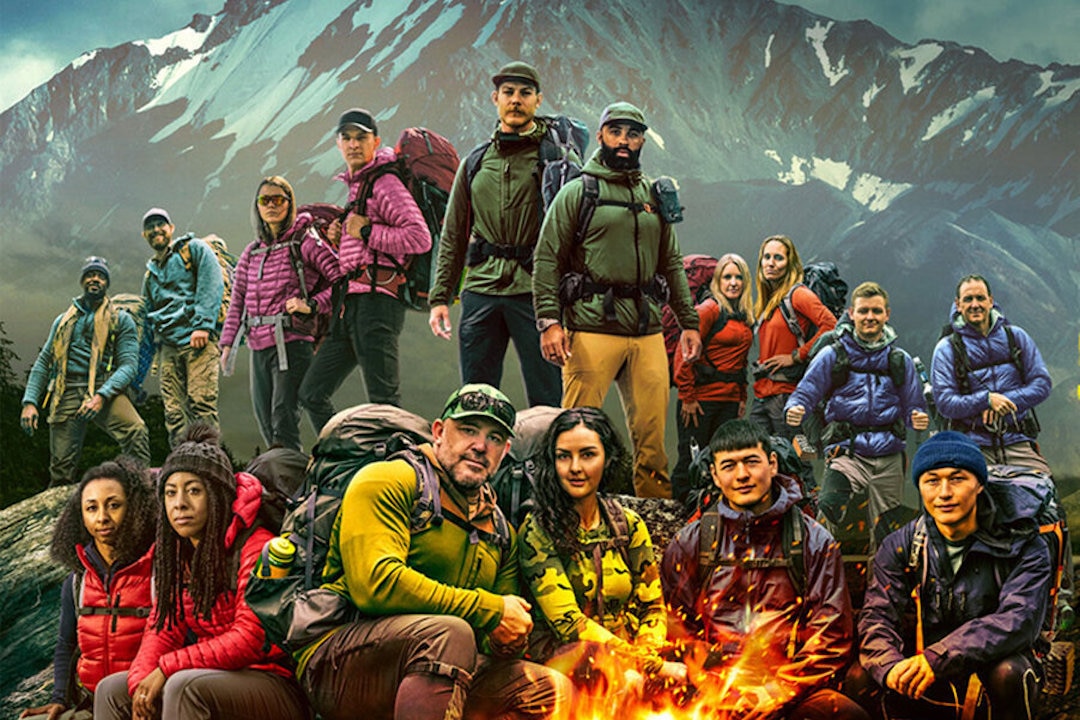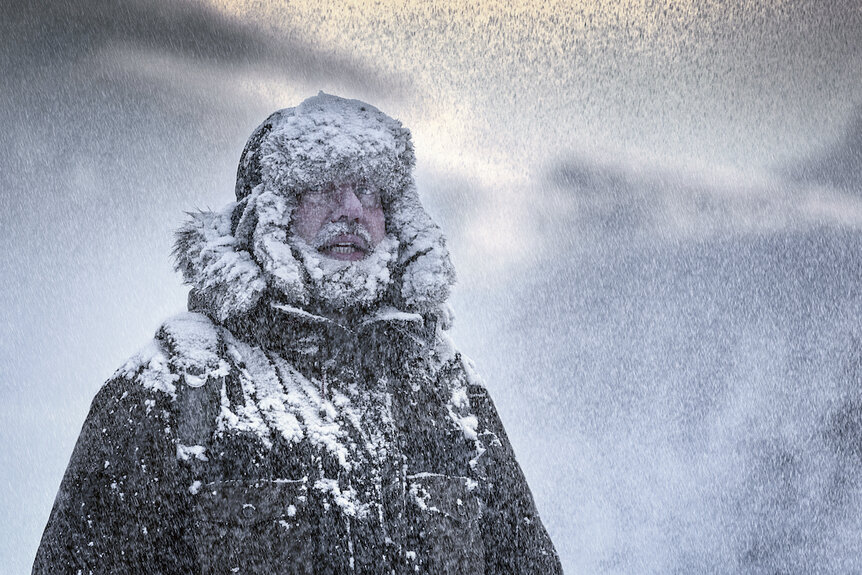Create a free profile to get unlimited access to exclusive videos, sweepstakes, and more!
'Race to Survive: Alaska' survival guide: How (not) to die of hypothermia
What to expect when it's cold, and getting colder.

On April 3, the world got their first glimpse of 16 intrepid explorers on a death-defying race across the Alaskan wilderness in USA's Race to Survive: Alaska (new episodes air every Monday at 11 p.m. ET). The series premiered with a special episode, introducing the eight teams of two competing in six separate races over 100 miles of wilderness terrain in Alaska’s Aleutian Islands. The teams, elite competitive athletes and survivalists all, can use only what they carry on their back and the skills they have honed over a lifetime. The last team to complete any race is eliminated, until only one team remains.
RELATED: An army of green crabs are poised to invade Alaska
The prize on the other side of the last finish line is half a million dollars, but to win it, they’ll first have to survive. While every effort has been made to keep the participants safe, they are traveling through the Alaskan wilderness. They’ll have to contend with wildlife, manage resources, avoid injury, and endure the unforgiving elements of the Last Frontier. Injury and illness are almost inevitable, and while you might be able to outmaneuver an animal, you can’t outrun the cold.
GETTING HYPOTHERMIA
The condition is right there in the name. It involves heat and not enough of it. Hypothermia is the name we’ve given to what happens when a person’s body temperature drops below homeostasis. It is the result of prolonged exposure to unusually low temperatures.
The great thing about being a mammal is we don’t often have to think about keeping our body temperature in check. Your body does a great job of doing that, by fiddling with your metabolism, without needing any direction from your conscious mind. If you get too cold, your body throws a couple extra logs on the fire (burns some stored calories) to generate heat and keep you warm, but there are limits. When a person is exposed to very cold temperatures for an extended period, their body will start to lose heat more quickly than it can replace it, and their core temperature drops.
Typically, the colder it is, the more quickly a person can become hypothermic. That usually means very low temperatures, in the teens or single digits, but hypothermia can set in at higher temperatures, as well. Even temperatures we usually think of as pretty mild. Hypothermia has kicked into gear at temperatures of 40 – 50 Fahrenheit (4.5 – 10 Celsius), particularly if a person is wet and can’t transfer heat as well, according to Dr. Troy Madsen, a physician at the University of Utah.
RELATED: Freezing heads in liquid nitrogen: the science behind ‘Jason X’
Average temperatures in Unalaska (the Aleutian Islands’ major population center) don’t get very warm even in the summer. The warmest period of the year, from the end of June to mid-September, has average temperatures of only 52 Fahrenheit (11 Celsius). August is the warmest month, peaking at just a few degrees warmer. The rest of the year, temperatures stay around 40 Fahrenheit, dipping into the low 30s in January. That means that most of the year, you’re at or near the hypothermia danger zone.
Hiking through forests, sloshing through waterways, tromping through snow, and sweating up a storm are reliable ways to get wet, and staying warm will be a priority not just for the winning team, but for everyone.
HOW LONG HAVE YOU GOT BEFORE HYPOTHERMIA SETS IN?
From the moment you step into a cold environment, a clock starts ticking. How much time you have on the clock is a result of dozens of variables. How quickly a person succumbs to hypothermia depends on the temperature, wind speeds, the type of gear they have, their body weight, training and conditioning, and half a hundred other variables. Mostly, though, it comes down to how cold it is and how long they’ve been in that cold.
At incredibly low temperatures, like those found at some of Earth’s most frigid locations, hypothermia could take root in as little as five minutes. Even at 40 degree temperatures with mild winds, the risk of frostbite and hypothermia increases after only 30 minutes. Crank up the winds or turn down the thermostat and the number on the countdown clock decreases.
If you’re cold, they’re cold. And by “they” we’re talking about your fingers and toes. Unless you know what, you’re doing, we recommend pausing the snowball fight every half hour to check in with your body and have a cocoa break.
WHAT TO EXPECT WHEN IT’S GETTING COLDER
Once your body starts to lose the thermodynamic fight, your core temperature starts to drop. Your body, recognizing the threat to critical organs, cuts the extremities loose, like extra cargo on a sinking ship. There’s only enough energy to keep some parts of your body warm. Your fingers, toes, nose (anything particularly far away from the center) all draw the short straw.
That keeps you alive longer, but at the expense of your extremities. The vessels constrict, concentrating warm blood in your core, cutting your fingers and toes off from blood, oxygen, and nutrients. If you don’t get help soon, those tissues will never recover. Meanwhile, you’ve begun to shake violently. This is unpleasant, but it’s another way your body is trying to keep you alive.
Heat is mostly generated in the muscles, and you can ramp up heat production by two to four times by kicking muscle contracting into overdrive. Have you ever wondered what rapid, involuntary muscle contractions look like? They look like shivering. Fortunately, you may not have to worry about the discomfort for long. As your temperature continues to decline, your organs (including your brain) start to slow down. You’ll start feeling confused and forgetful, your reflexes will slow, and you’ll have trouble speaking.
RELATED: Can you really survive a blizzard inside a Tauntaun? Science says…
Just then, at your lowest, hope comes along, but it’s a false hope. You might start to feel warmer, and you might even stop shivering. It’s not because your body is winning the fight, but because it has already lost. The blood vessels in your extremities, exhausted from continually contracting, open back up and a wave of blood rushes from your core, into your extremities, bringing warmer blood to the surface. As a result, you might feel warmer. A lot warmer. So much warmer, that some hypothermia victims have been found with all of their clothes discarded in a final attempt to cool off as they continued to freeze to death.
What individuals experience during this stage is largely unknown. We can’t exactly set up experiments to see what happens without breaking every human rights law on the books, and asking people is difficult when most of them died and those who didn’t weren’t exactly in their right minds. Still, we like to hope that, at the end, people are warm, comfortable, and unafraid.
If you’re suddenly rethinking your Alaskan vacation, we get it. Visit vicariously in Race to Survive: Alaska. New episodes air on USA every Monday at 11 p.m. ET.















